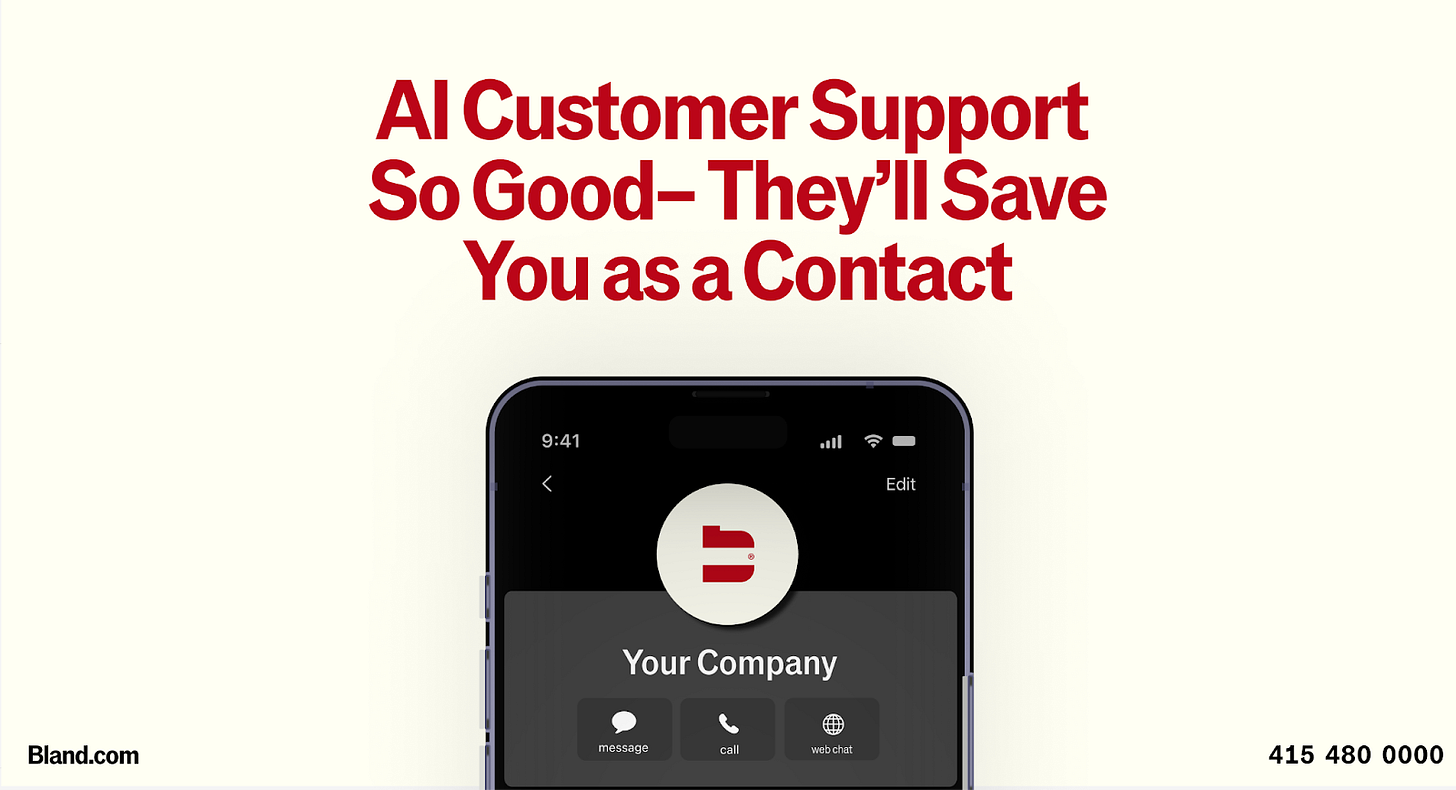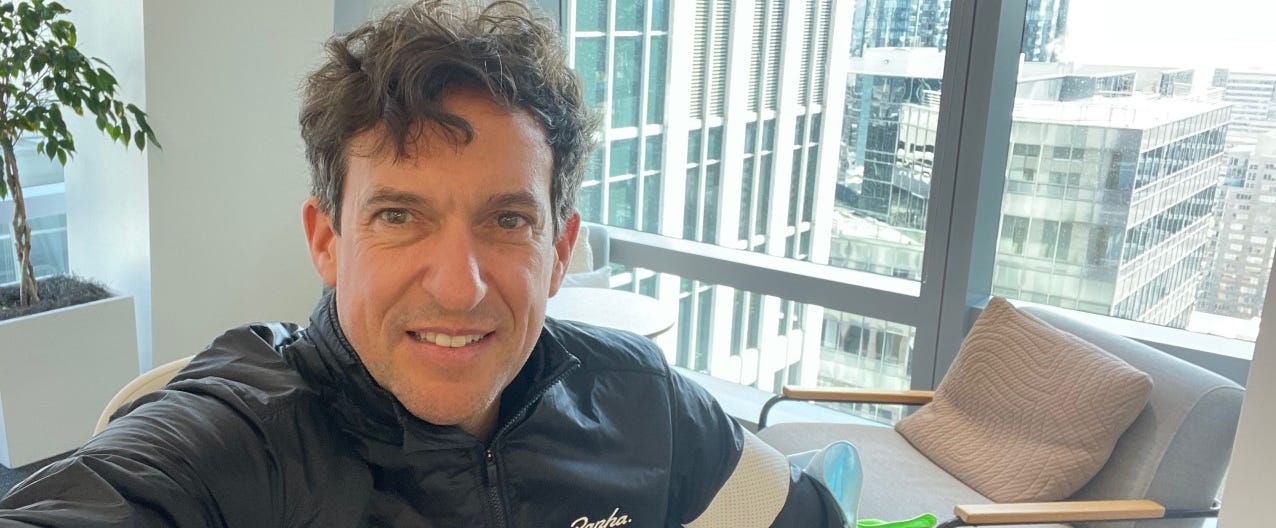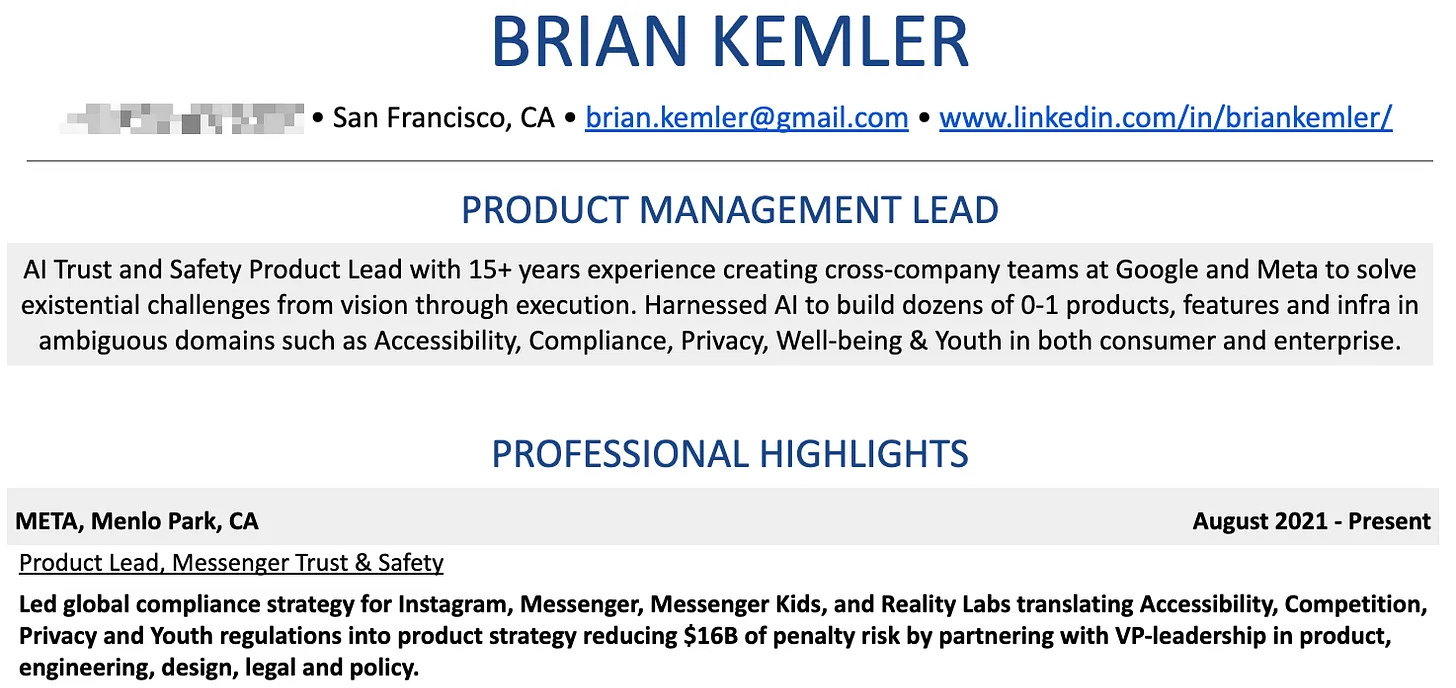How I Landed 7 Final Round Interviews in One Month with AI’s Help | Brian Kemler
Use AI to unlock your candidate market fit and skip the resume pile to land your dream job
Dear subscribers,
Today, I want to feature a guest post from Brian on using AI to find a great job.
In this tough PM job market, Brian worked with AI to land final rounds at 7 major tech companies (e.g., Apple, Roblox, DoorDash) in under a month.
When he shared the news on LinkedIn, I had to know how he pulled it off. Here’s exactly how he did it in 6 steps:
Find your candidate market fit
Craft your resume around that fit
Select companies where your fit is strongest
Use targeted LinkedIn search to skip the resume pile
Research each company with AI’s help
Use AI to create company interview dossiers
This post is a must-read if you want to learn how AI can help with your job search. Subscribe to Brian’s newsletter for more insights on how to grow your PM career.
This post is brought to you by… Bland.com
Bland is the most realistic voice AI available and chances are, you’ve already spoken to it without noticing. Everyone from Fortune 500s to startups has been using Bland to build omni-channel AI agents for sales, support, and more. It can handle:
1M+ calls simultaneously 24/7 via any language, voice, or tool.
Use cases like SMS and web chat with guardrails to prevent hallucinations.
To try Bland, call the number in the image above or…
Brian here! Last month, I did something that surprised even me.
I got final rounds at 7 major tech companies in a month — during one of the toughest PM job markets we've seen. Many people asked how I pulled this off.
The short answer is that I spent way more time on strategy than most people do.
Instead of brute-force applying to companies and hoping something sticks, I focused on my candidate market fit and using AI to bring it to life. Here’s my 6-step process:
1. Find your candidate market fit
Your candidate market fit is where your experience meets market demand.
My background spans hardware and software product work across privacy, accessibility, real-time communications, AI, and 0-1 product development. I knew that I needed a clear narrative about how these pieces fit together.
Should I go for 0-1 roles? An AI position? Accessibility PM lead? I could see myself doing all of these, but there were few jobs at my target level and each had competition.
Then I noticed how many trust and safety PM roles were out there.
With AI’s help, I crafted a narrative about how I evolved with the industry:
I helped start the first privacy team at Google before moving to Meta to work on encryption where I responded to safety needs when war broke out in Ukraine. I then pivoted to well-being and compliance before going deep on using AI to solve these problems.
My one-line summary became “AI Trust and Safety Product Lead.”
Anyone in the industry could understand it. It communicated depth and breadth while telegraphing my target level (L7+).
Had I worked backwards from "my dream job," I might still be competing with 1,000 other PMs for generic 0-1 roles. Instead, I gained rapid uptake on all my outreach and wasn’t ghosted by recruiters a single time.
2. Craft your resume around your fit
Now, as an AI Trust and Safety Lead, I revamped my resume with AI’s help.
Gone was my former 3-page, multi-purpose resume designed to fit me into everything. Instead, I crafted a laser-focused resume that reinforced my candidate market fit.
I sought feedback from product leaders who went through recent, successful hiring journeys. Some advice was good, some bad. I listened when they said to cut from 3 pages to 2. But I ignored advice from a professional resume writer who told me to remove links to my Google blog posts and patents "because no one would read them."
In today’s PM jobs market, you have to show proof of work.
Those links are my key differentiators and public validation of my work.
I also worked with Claude to craft a tight 51-word summary embodying my candidate market fit. It signaled why I was a great fit for a leadership-level AI safety PM IC role. Here’s exactly how I iterated on my resume with Claude:
First, I pasted my resume into Claude with this prompt:
I'm an AI trust and safety product leader targeting senior leadership roles at top tech companies including Apple, Google, DoorDash, Roblox and TikTok; please critique my resume’s strengths and weaknesses, then make recommendations on how I might improve it.Then, I fine-tuned the resume for the job description for each company:
Now please consider how well my resume is suited to the following role [Copy of job description] given my CMF of AI Trust and Safety Product Lead.You can see my public resume here.
3. Select companies where your fit is strongest
Here's where most people mess up — they apply everywhere and spray and pray.
Instead, I meticulously researched companies where my specific background gave me an unfair advantage. I looked for large, public tech companies with a clear need for AI trust and safety product leads. My target short-list included companies like Anthropic, Apple, DoorDash, Google, Netflix, Roblox, and TikTok.
Each had clear business reasons to prioritize trust and safety leadership. Now it was time to activate my network.
4. Use targeted LinkedIn search to skip the resume pile
I didn’t apply online to a single role at my target companies.
Had I gone through the front door of online applications, I'd still be nursing wounded feelings from automated rejections.
The truth is that hiring managers curate the candidate pipeline and tell recruiters whom to interview. I used a targeted LinkedIn search to find these hiring managers.
Here’s the exact search that I used to bypass the black hole of online applications:
In LinkedIn Search, type in the job title of potential hiring managers. They usually have “Director of Product” or “Group Product Manager” titles.
Click on “People” and select 1st and 2nd degree connections.
Filter to your desired location (e.g., “San Francisco Bay Area”)
Under “All Filters” narrow by company (e.g., “Meta”)
With this search, I discovered 1st and 2nd degree connections who were hiring PMs at all but 2 of my target companies.
Even better, I had helped two of them with their prior job hunts. Now they were hiring trust and safety PMs. After connecting directly, they each moved me into full interview panels immediately.
5. Research each company with AI’s help
I used ChatGPT and Claude’s Deep Research to generate comprehensive dossiers about each company and industry. Here are useful prompts for you to try (modify the company and job title first):
Deep research on a company’s vision, values, and products
Create a dossier on DoorDash for an AI Trust and Safety PM preparing for interviews. Include: mission/values, founders, products, competitors, recent news. Focus on trust, safety, privacy, regulatory, or AI-related news. Cover business model and key challenges.Deep research on a particular job (e.g., trust and safety PM lead)
You're a director of PM for a trust and safety team at a delivery platform like DoorDash or Uber Eats. Research how to keep drivers safe during pickups/dropoffs. Write a comprehensive brief on problems (with metrics) and survey what the industry has done to improve driver safety.Here’s an example of the deep research report that it came up with:
I read these dossiers voraciously and listened to them during drives using Google's NotebookLM, which turns documents into podcasts hosted by two AI voices.
The audio format helped me internalize information better than just reading.
6. Use AI to create company interview dossiers
I didn't just use AI to research the companies. I also used it to predict questions each interviewer would ask and prep detailed interview dossiers for each company.
Interviewers consistently said I understood their business better than other candidates. Several mentioned that I asked more thoughtful questions than people who already worked there.
Here's exactly how I created prepped for each interview with AI:








